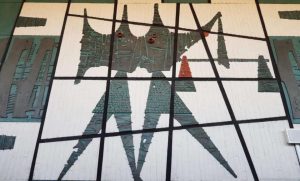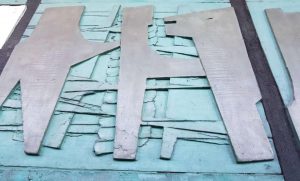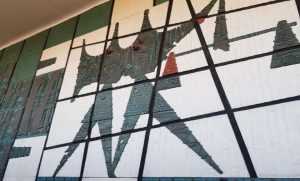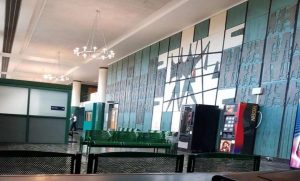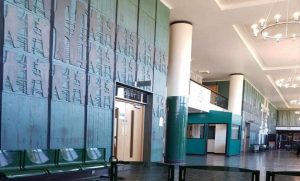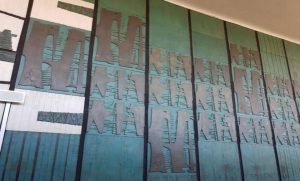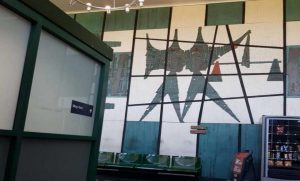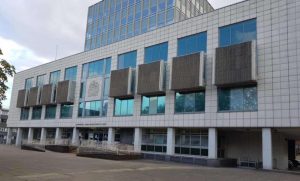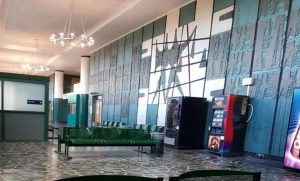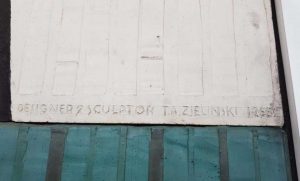Tadeusz Adam Zieliński’s artwork at Camberwell Green Magistrates Court
Camberwell Green Magistrates’ Court is closing at the end of December 2018.
The closure is nothing out of ordinary, it is in fact a typical example of current Ministry of Justice’s cost-saving exercise, where a number of courts nationwide are due to close in the near future and their workload is to be taken over by a neighbouring courts. In the case of Camberwell, Croydon Magistrates is to receive all its adult cases and Bromley is taking over the youth court cases.
Why does Camberwell Green’s closure matter to Polish community, you might rightly ask.
The answer is staring in the face of anybody who has ever visited the second floor of the Camberwell court. The second floor is where the bulk of cases are being heard. The floor accommodates four courtrooms, several consultation rooms, video link facility and the security guards desk. The whole length of one side of the second floor wall, is adorned by an imposing looking green relief by Tadeusz Adam Zieliński. It really is a striking work of art.
It stretches just under 100 metres long and some 5 metres tall.
It consists of two parts, separated by the main entrance to the floor, which depict what looks like the same scene. Unfortunately I am not sure what the title of the artwork is.
The court is open to the public Monday to Friday from 9am till 5pm, and on Saturday from 9am till 1pm. There are no restrictions on who can visit. If you are nearby, I would suggest that you come in and have a look for yourself.
Please also refer to the photos for a better idea of the scale and look and feel of the piece.
Tadeusz Adam Zieliński (1907-1993) was a soldier in general Anders army, as well as a sculptor and painterHis work is displayed in many places around the world, for example in Jerusalem, London (notably Andrzej Bobola church, Lambeth Palace Crypt Chapel, South Norwood Polish chapel, tombstones in Brompton Cemetery, and several other London cemeteries), Polish Millenium House in Birmingham and Carfin near Glasgow.
For detailed account of Zieliński’s life and art, please refer to his expansive artistic biography by Professor Elżbieta Barbara Zybert, available online in Polish:
http://www.kul.pl/files/1490/rk/rk8_2_2017/02-zybert_corr.pdf
An abbreviated version of the biography translated into English will be available here shortly.

